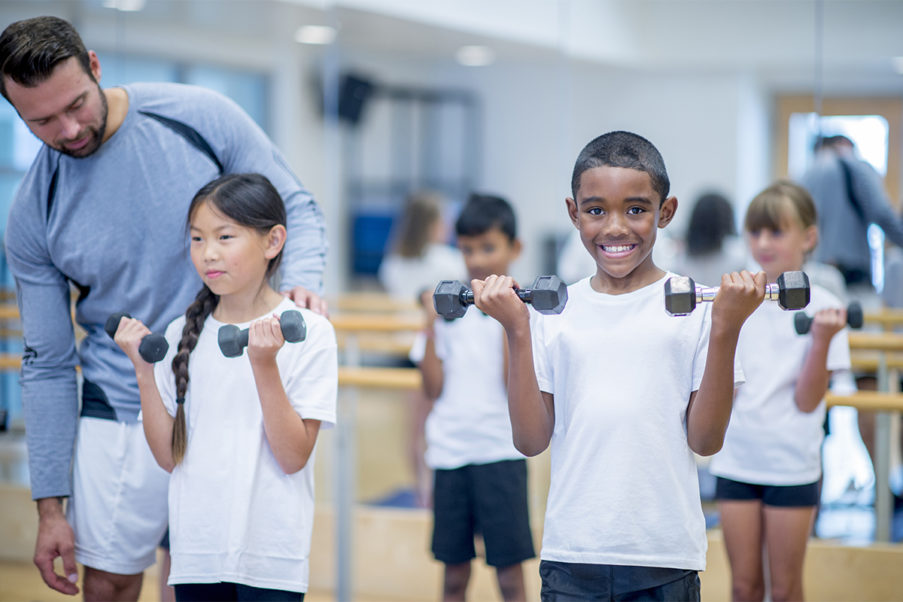Myth-Busting: “Strength Training Stunts Growth in Kids”
But does it...really?

For decades, parents and coaches worried that weightlifting or resistance training might “stunt” a child’s growth. This myth has been repeated so often that many families still hesitate to let their kids train with weights. But modern science tells a very different story.
What the Science Really Says
Current pediatric and sports-medicine guidance is clear: properly supervised resistance training is safe for children and adolescents and does not interfere with growth. The American Academy of Pediatrics (AAP) reaffirmed this in its 2020 clinical report, highlighting that well-designed programs provide benefits that extend far beyond strength, including improvements in bone mineral density, motor skills, and injury prevention (Stricker et al., 2020).
Far from harming growth plates, progressive resistance training can protect against bone injuries by increasing bone strength and reducing fracture risk. These adaptations are especially important during growth spurts, when rapid skeletal changes can make young athletes more vulnerable to injury.
Benefits Beyond Muscles
- Stronger bones: Resistance training during youth is linked to higher peak bone mass – a key factor in lifelong skeletal health (Lloyd et al., 2014).
- Injury prevention: Neuromuscular training improves movement mechanics and reduces risk of sport-related injuries like ACL tears (Faigenbaum & Myer, 2010).
- Confidence & competence: Kids who learn proper lifting technique often feel more confident in sports and daily movement, which builds long-term physical literacy.
- Metabolic health: Strength work complements aerobic activity by improving insulin sensitivity and supporting a healthy weight trajectory.
Where Risks Come From
While resistance training itself isn’t harmful, risks do increase when kids lift maximal loads without proper coaching or in unsafe environments. Poor form, excessive weights, or unsupervised sessions can raise the chance of sprains, strains, or overuse injuries (British Journal of Sports Medicine, 2017).
That’s why experts stress that programs should be:
- Supervised by trained professionals or coaches.
- Technique-centered, focusing first on form before adding load.
- Progressive, increasing resistance gradually as skills improve.
- Age-appropriate, beginning with bodyweight and light resistance before advancing.
Practical Takeaways for Parents & Coaches
- Start with bodyweight basics (pushups, squats, lunges) before adding weights.
- Emphasize quality over quantity – a few well-executed reps beat sloppy high-volume sets.
- Use light free weights, resistance bands, or medicine balls when introducing external load.
- Keep sessions fun and skill-focused, especially for younger athletes.
The Bottom Line
Strength training doesn’t stunt growth – it supports it. With the right supervision and progression, kids can safely build strength, protect their bones, and develop confidence that carries into sports and life. Far from being risky, youth resistance training is one of the best investments we can make in children’s long-term health.
References
Faigenbaum, A. D., & Myer, G. D. (2010). Resistance training among young athletes: Safety, efficacy and injury prevention effects. British Journal of Sports Medicine, 44(1), 56–63. https://doi.org/10.1136/bjsm.2009.068098
Lloyd, R. S., Faigenbaum, A. D., Stone, M. H., Oliver, J. L., Jeffreys, I., Moody, J. A., … Myer, G. D. (2014). Position statement on youth resistance training: The 2014 International Consensus. British Journal of Sports Medicine, 48(7), 498–505. https://doi.org/10.1136/bjsports-2013-092952
Stricker, P. R., Faigenbaum, A. D., & McCambridge, T. M. (2020). Resistance training for children and adolescents. Pediatrics, 145(6), e20201011. https://doi.org/10.1542/peds.2020-1011



